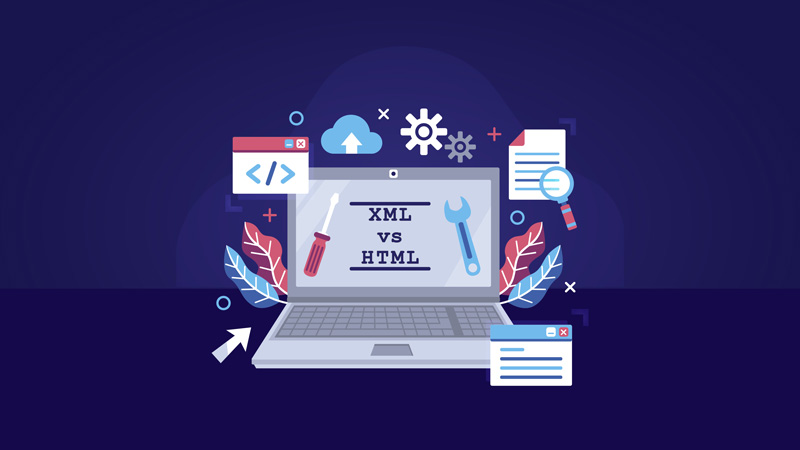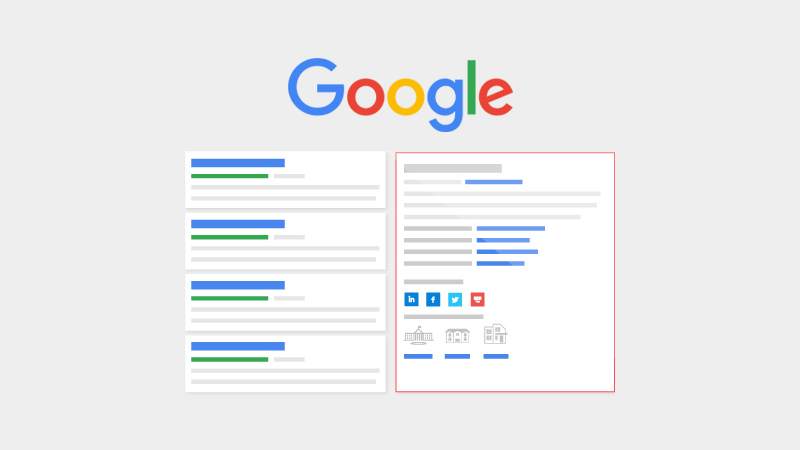Sitemaps are an essential part of any website’s SEO strategy, helping search engines and users navigate your content. However, not all sitemaps are the same. The two most common types are XML sitemaps and HTML sitemaps, each serving a distinct purpose in improving website visibility and performance.
In this blog, we’ll explore the differences between XML and HTML sitemaps, their individual roles in SEO, and when to use each one for optimal results.
Understanding an XML Sitemap and HTML Sitemap?
An XML sitemap is a file specifically designed for search engine crawlers. It lists all the key URLs of your website, helping search engines find, crawl, and index your content more efficiently. This is especially useful for large websites, ensuring that important pages are not overlooked.
An HTML sitemap, on the other hand, is a user-facing page that lists the important links of your website in an organized, hierarchical structure. It serves as a guide for visitors to easily find pages, especially when your site is large or complex.
Key Features of XML Sitemaps
- Search Engine-Focused: Created solely for search engines like Google, Bing, and Yahoo, XML sitemaps help bots understand your site’s structure.
- Supports Metadata: XML sitemaps include additional information such as the last modification date of a page, its importance, and how often it changes.
- Automatic Updates: CMS tools like WordPress automatically update XML sitemaps when new content is added, ensuring search engines always have the latest version.
- Enhances Crawl Efficiency: Helps search engines prioritize the most important pages, improving the overall crawl budget.
Key Features of HTML Sitemaps
- User-Friendly: Designed for human visitors, an HTML sitemap helps users quickly navigate your website and find specific content.
- Improves Internal Linking: An HTML sitemap strengthens internal links across your site, helping both users and search engines discover new pages.
- Enhances User Experience (UX): A well-organized HTML sitemap improves site navigation, which can reduce bounce rates and increase time spent on the site, both of which are beneficial for SEO.
- Mobile Usability: In mobile-first indexing, having a mobile-friendly HTML sitemap can improve user experience on smartphones and tablets, leading to better SEO performance.
XML Sitemap vs HTML Sitemap: Key Differences
| Factor | XML Sitemap | HTML Sitemap |
|---|---|---|
| Purpose | Aimed at search engine bots | Aimed at human visitors |
| Visibility | Hidden from users, visible to search engines | Publicly visible to users |
| Crawlability | Improves search engine crawl efficiency | Enhances user navigation and internal linking |
| Content | Lists all important URLs with metadata | Lists key pages and sections |
| Format | Code-based, in XML format | Readable, in HTML format |
| Use Case | Best for search engine indexing and large sites | Best for improving user experience and site structure |
How Do XML and HTML Sitemaps Benefit SEO?
Both XML and HTML sitemaps have their place in a well-rounded SEO strategy. Let’s break down how each one impacts SEO:
SEO Benefits of XML Sitemaps
- Faster Indexing of New Content
XML sitemaps notify search engines of new or updated content, speeding up the indexing process. This is especially important for time-sensitive pages, like news articles or new product launches. - Improved Crawl Budget Management
With an XML sitemap, you can help search engines allocate their crawl resources more efficiently by highlighting high-priority pages. This can boost the likelihood of important pages getting indexed and ranked quickly. - Better for Large or Complex Sites
Large websites with deep structures or lots of content (e.g., eCommerce sites) benefit from XML sitemaps by ensuring that no page gets lost or buried too deep for search engines to find.
SEO Benefits of HTML Sitemaps
- Enhanced User Experience
HTML sitemaps improve navigation for users, especially on large sites. Better user experience leads to longer session durations, higher engagement, and lower bounce rates, factors that contribute to better SEO rankings. - Strengthens Internal Linking
By providing a clear link to important sections and pages, HTML sitemaps distribute link equity across your site. This internal linking boosts SEO by helping search engines understand the structure and importance of each page. - Improved Accessibility
HTML sitemaps make it easier for users with limited technical knowledge or those using screen readers to navigate your site. This improved accessibility is not only user-friendly but also favorable in the eyes of search engines.
When Should You Use an XML Sitemap vs an HTML Sitemap?
Use an XML Sitemap When:
- You have a large website with many pages that need to be indexed.
- Your website frequently publishes new or updated content.
- You need to improve the crawlability of deep or buried pages.
Use an HTML Sitemap When:
- You want to improve user navigation and overall user experience.
- You have a smaller or medium-sized website, and user engagement is a priority.
- You aim to strengthen internal linking and distribute link equity.
For the best SEO results, it’s ideal to use both XML and HTML sitemaps. An XML sitemap ensures search engines can efficiently crawl and index your pages, while an HTML sitemap improves user experience and strengthens internal links.
Final Thoughts
While both XML and HTML sitemaps serve different purposes, they are complementary tools in your SEO strategy. XML sitemaps help search engines discover and index your content efficiently, ensuring your important pages don’t go unnoticed. Meanwhile, HTML sitemaps improve user navigation and internal linking, which leads to better engagement and overall site performance.
By incorporating both sitemaps into your SEO plan, you’ll boost your chances of ranking higher on Google and other search engines while improving the experience for your visitors.





